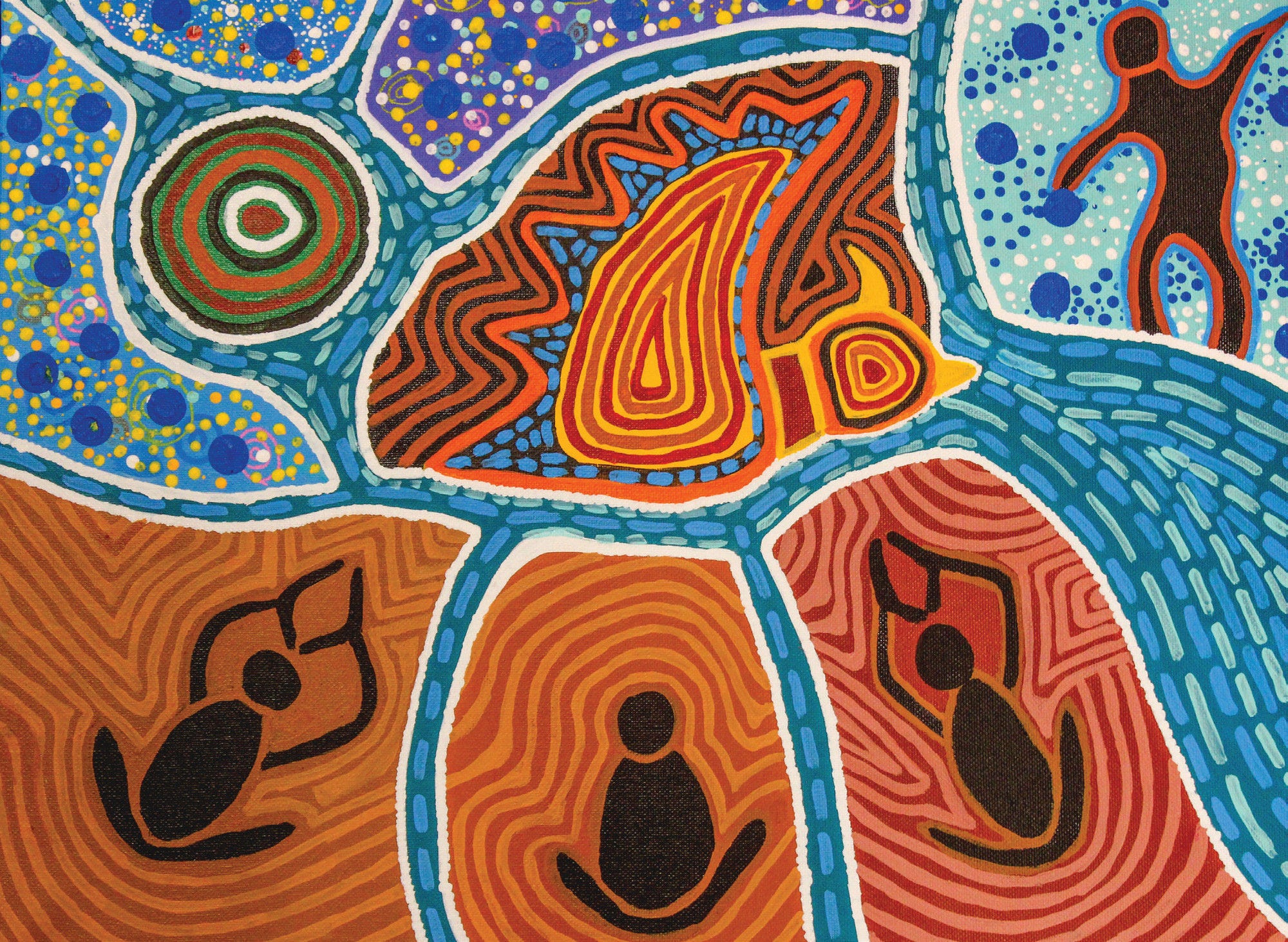There are approximately 800 000 Indigenous Australians, representing 3.3% of Australia’s total population. Scientific evidence currently suggests that mainland Australia was first settled by Indigenous peoples approximately 65 000 years ago. Prior to colonisation, there were around 500 clan groups that occupied different territories. The intimate relationship between spirituality, livelihoods, kinship, and place is central to understanding Indigenous Australians. It is the world’s oldest living continuous culture and Aboriginal and Torres Strait Islander peoples make a vital contribution to contemporary Australian society. Indigenous Australians are also important for the future of the national economy. For example, the amount of land with Indigenous ownership and interest has increased significantly in the last 50 years, and now covers approximately half of Australia’s land mass.
Historical legacies of colonialism continue to shape the economic prosperity and well-being of Indigenous peoples in Australia today. For centuries, Indigenous peoples were denied the opportunity to earn a decent income, build wealth, and transfer it between generations. For example, following the First World War, returning Indigenous servicemen were excluded from the ‘soldier settlement’ schemes that granted blocks of land to other returning soldiers. Since the 1970s, Indigenous peoples have had their rights recognised, which for some has included land and rights to development.
Compared to the non-Indigenous population, Indigenous peoples in Australia are more likely to be located in predominantly rural regions (48% of the Indigenous population live in predominantly rural regions, compared to 17% for the non-Indigenous population). As such, Indigenous Australians are relatively more important to rural economies in terms of labour supply and consumption, and can play a key role in unlocking the growth potential of regional economies. In recent decades, there have been significant levels of local innovation and entrepreneurship amongst Indigenous Australians, with business growth in areas such as construction, tourism, environmental services, arts and culture. However, significant gaps in socio-economic outcomes with non-Indigenous Australians remain and these gaps are larger in rural regions. For example, the employment rate for Indigenous Australians stands at 55% compared to 75% non‑Indigenous Australians in predominantly urban regions and 40% compared to 75% in predominantly rural regions. Hence, Indigenous employment is 20 percentage points lower in predominantly urban regions, and 35 percentage points lower in predominantly rural regions in Australia.
The Australian Government has made a commitment to working with Indigenous Australians to improve socio-economic outcomes, including with regard to business and economic development. This study, along with its recommendations, has been undertaken within the framework of this overarching commitment. It provides three key recommendations to better support economic development outcomes for Indigenous peoples. The first is related to improving the quality of the statistical framework and the inclusion of Indigenous peoples in the governance of data. This includes improving data about Indigenous businesses, developing data about issues that Indigenous peoples value, and empowering Indigenous institutions to collect and utilise their own data. Second, entrepreneurship provides opportunities for Indigenous peoples to use assets and resources in ways that align with their objectives for development. This includes improving support for participation in the public procurement market, prioritising reforms to land use and administration, and facilitating the growth of Indigenous-owned financial institutions. Third, an approach to governance is needed that adapts policies to places, and that empowers Indigenous institutions and communities. There is a need to strengthen the capabilities of local institutions to manage economic development, and to strengthen the involvement of Indigenous peoples as partners in the decision-making process.
This report provides actionable recommendations to improve business and community economic development outcomes for Indigenous Australians at a local and regional level. It contributes to the work programme of the OECD on regional and rural development, and was approved by the Regional Development Policy Committee (RDPC) on 19 November 2019 [CFE/RDPC/RUR(2019)8].
This report comes at a time when policy makers, citizens and businesses are challenged by the COVID‑19 crisis that will generate a profound reflection on our production and consumption habits, as well as on local economic recovery policies. This report does not reflect on the current situation but acknowledges that Indigenous populations are particularly vulnerable to the health and non-health consequences of the COVID-19 crisis. Challenges faced by Indigenous communities include overcrowded housing, poorer health outcomes and limited access to health services and infrastructure; all of which exacerbate the risks of COVID‑19 especially in remote communities. Policy responses such as travel restrictions to Indigenous lands are important to keep communities safe, yet they also entail the need to ensure the supply of food and essential items and to compensate for loss of income, for instance from selling art to tourists. Going forward the OECD will reflect on this new context in future work streams of work related to this topic.
